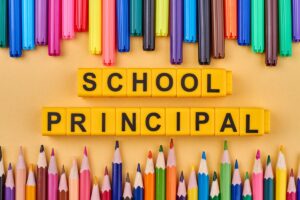You likely found yourself in a leadership role because of your documented success as a teacher through your direct instruction, but having a more indirect impact on student learning from the leadership seat requires strategic efforts. Targeted, cohesive feedback and cyclical, ongoing support are two specific ways to empower instructional growth in your teachers, but they will only fully stick with the third: relationships.
What is Instructional Leadership in Education?
Instructional leadership in education has been described in similar ways over time by various experts in the field. In a nutshell, it’s how an educator, typically in an administrative or specialist role, guides their colleagues to improve and refine their instructional strategies to better impact student learning.
It’s essential to recognize that teachers can certainly provide instructional leadership to their colleagues as well, for example, in a Professional Learning Community (PLC), but for the purposes of this article, the focus will be on the specific efforts that administrators and coaches can enact for effective instructional leadership.
Strategies for Effective Instructional Leadership in Education
Clear Vision
Strong leaders set a purposeful vision, based on evidence from the students and communities they serve. The vision should be central to the mission of the school and should have specific outcomes identified as goals. Simple language is helpful to ensure all constituents can easily understand and refer back to the vision, creating cohesion as the work unfolds over the school year.
Structures for Communication
The next step is ensuring there are leadership access points to your teachers that are expected, predetermined, and intentional. Having a combination of formal and informal opportunities to dig into instructional strategies and student data will support a comprehensive instructional leadership approach.
Creating a school year calendar that identifies specific professional development sessions, collaborative meetings like PLCs, and direct observation and evaluation sessions promote cohesive and consistent opportunities to advance instructional practice.
Targeted Feedback
Your feedback is one of the most high-leverage tools you’ll employ to provide instructional leadership. When observing a class, it’s important to collect objective information. This may include what questions the teacher asks, which students participate, what the task demands of the students, and the timestamps to monitor pacing of the lesson. Once the information is collected, what you do with it is what makes or breaks your instructional leadership.
Identifying celebrations and one to two specific areas of growth with suggestions for refinements will focus the teacher’s efforts. Be sure that the feedback you provide around growth is what you determine will make the most impact on student learning, even if there are additional things you may want to see changed. Keeping this focused lens for the receiver of your feedback will ensure change in practice is feasible because it is limited in scope and ideally tied to your clear vision and student outcomes.
Monitoring Progress Towards Outcomes
Feedback and support is only as good as the impact it has on students! Ensure that you have strategic plans to monitor student learning around the specific goals you have for your instructional leadership. What assessment tools, both formal and informal, will support your analysis of impact on student learning? Once you have identified these checkpoints, collecting and analyzing the data for trends is the next step.
As best you can, finding points of celebration within the data promote continued efforts from your teachers to employ your feedback in their practice. Areas of weakness in the data can also be motivating for teachers to evoke changes in practice. Set ambitious yet attainable goals for student learning at the start of the year, ensure your instructional leadership efforts are cohesive to that goal, and then be transparent with your staff about the data so that they can see the connection between changes in instructional practice and student outcomes.
Building Capacity and Shared Leadership
Do not discount the power of teacher voice! The highest form of instructional leadership is building that leadership capacity within your staff. Whether you explore instructional rounds, collegial coaching, or a core instructional leadership team that has classroom teachers directly included in the leadership planning process, these opportunities can create some of the most powerful motivation for teachers to consider changing instructional practices.
Additionally, ensure you have strong resources to provide staff as models for what you are encouraging them to try instructionally. Videos and texts are helpful, and the opportunity to see a colleague in action is ideal. Creating the context for staff to feel safe trying these new instructional strategies without penalty is a key strategic move in your efforts to build capacity with them.
The key ingredient: Relationships
Great coaching, with thoughtful feedback and structured opportunities for support and reflection, will make a positive impact on teaching and learning in your school, but you will unlock your teachers’ greatest potential if they authentically trust you. Taking the time to visit classrooms without the intention of observing and providing feedback, capitalizing on opportunities to celebrate even the smallest wins for a teacher, and also being empathetic to the human experience when a teacher may be going through something that is not making them as available to the demands of our profession, all help to ensure that your teachers see your feedback as supportive and not punitive. When your teachers believe that you see the good in them, they will be far more likely to make changes in their instructional practices based on your leadership and feedback.
Educators never stop learning; check out our available graduate degree programs to hone your skills and promote lifelong learning and academic excellence.




